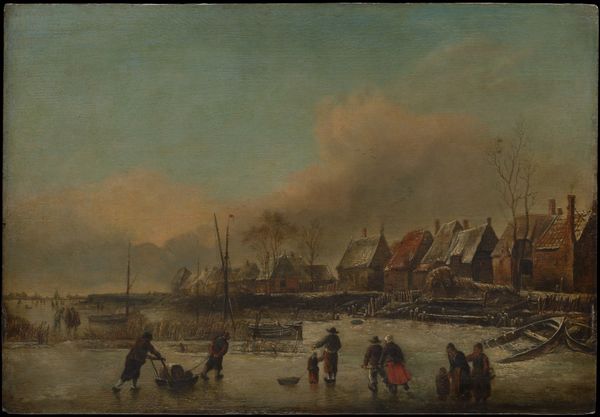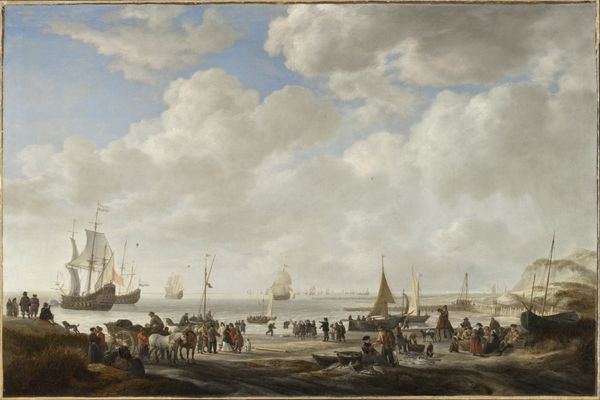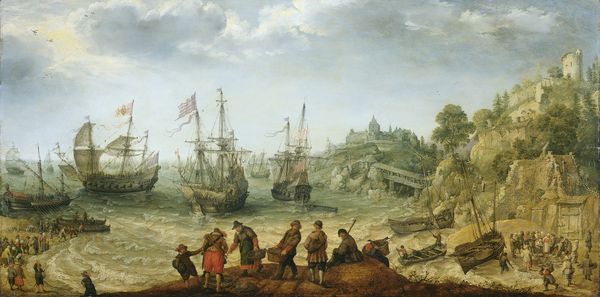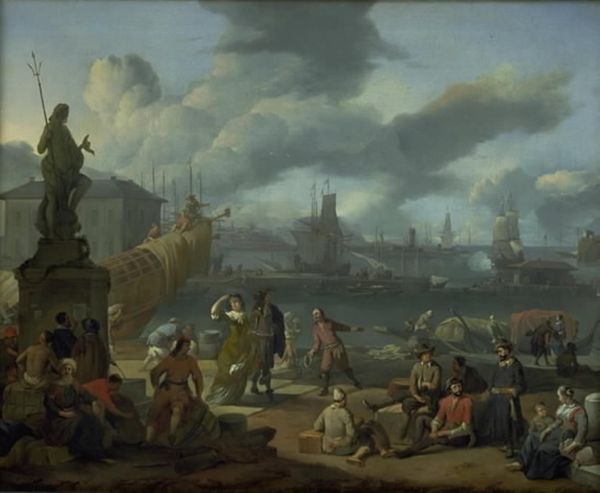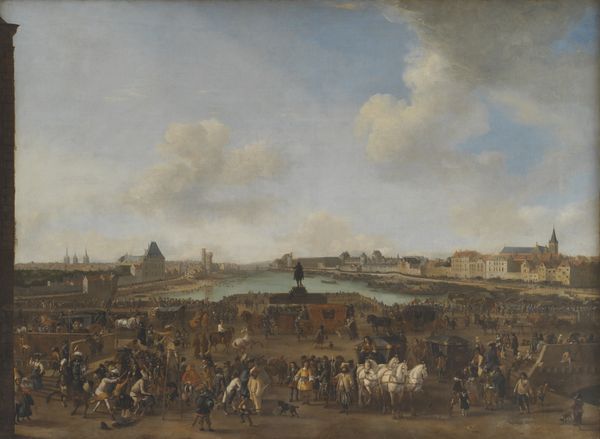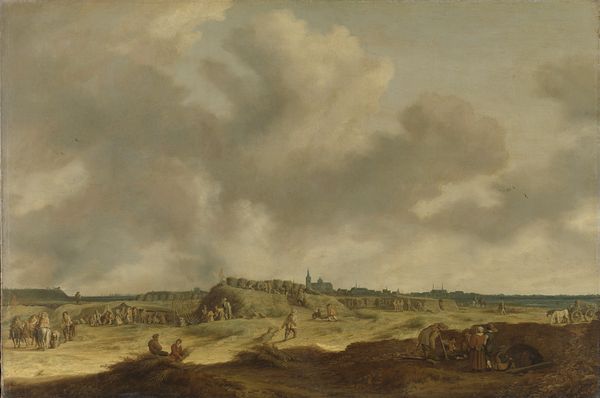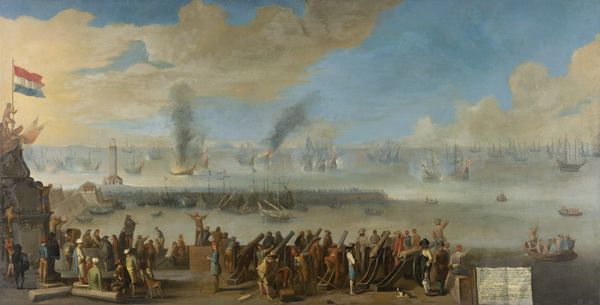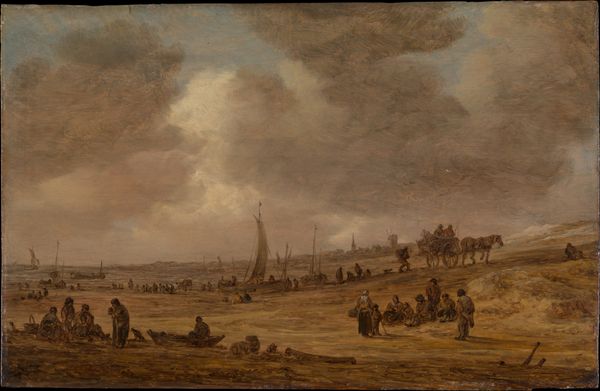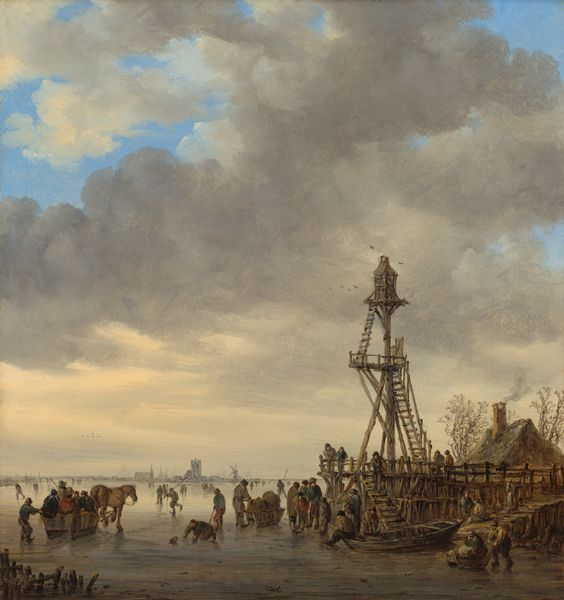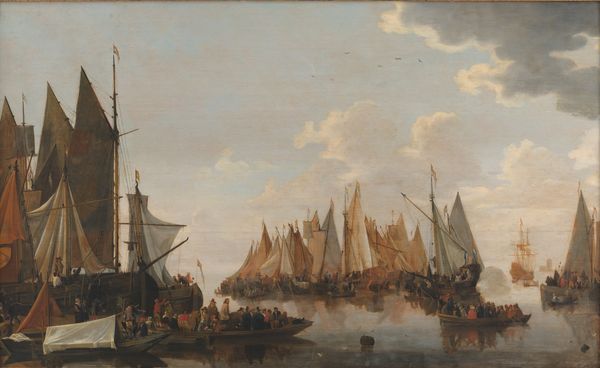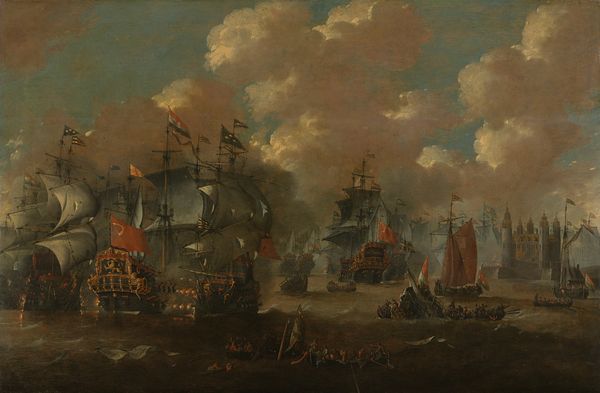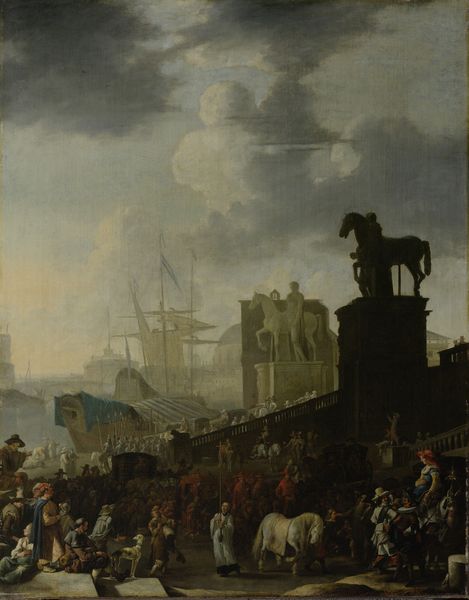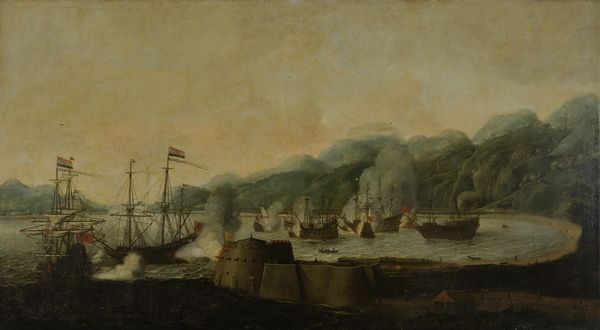
painting, oil-paint
#
narrative-art
#
baroque
#
dutch-golden-age
#
painting
#
oil-paint
#
landscape
#
oil painting
#
cityscape
#
genre-painting
Dimensions: height 108 cm, width 205 cm, height 131 cm, width 229 cm, thickness 10.5 cm
Copyright: Rijks Museum: Open Domain
Curator: This landscape seems otherworldly, almost lunar in its pallor. A strange tranquility despite all the labor depicted. Editor: It is rather striking, isn’t it? We're looking at Cornelis de Man’s "The Whale-oil Refinery near the Village of Smerenburg," painted in 1639. It hangs at the Rijksmuseum. It presents an intriguing vista of industry imposed on an Arctic landscape. Curator: The overwhelming sense is of human endeavor dwarfed by the vast, indifferent environment. That pallid iceberg… it feels less like a geographical feature and more like a silent witness. Even the whale being processed feels somewhat...resigned. Is this a moral comment? Editor: Absolutely, the imagery does lead to a discussion on Dutch economic history and the cost of prosperity. Smerenburg, located on Spitsbergen, was a Dutch whaling station. De Man's depiction, while seemingly straightforward, becomes powerful once we recognize it captures a brief, brutal moment in resource extraction history. The scene illustrates the complexities of that era—adventure, commerce, and exploitation all interwoven. Curator: I see such clear echoes of alchemical symbols here; the smoke rising from the refineries mimics the ascent of the soul. It hints at something profound being extracted beyond just whale oil. It's a transformation, both material and spiritual. Editor: Precisely, the industrial scene shouldn't distract from understanding that, as a cultural product, it justified aggressive economic activity by suggesting natural resources can be readily utilized. However, some scholars like to point to a possible critique of that approach subtly embedded within this type of paintings by De Man. The whale, nature… is being actively consumed to fuel mercantilist power in the Netherlands. Curator: Thank you for emphasizing the cultural and historical framework within which to view De Man's creation, especially its capacity to expose those fraught ethical ambiguities surrounding colonialism and industry. The symbolism here continues to deliver. Editor: Indeed, Cornelis de Man offers us more than a landscape; it’s an opportunity to consider how artistic representations reflect and shape cultural narratives about growth, dominion, and ultimately, our place within nature.
Comments
rijksmuseum about 2 years ago
⋮
Smerenburg on the Norwegian island of Spitsbergen was a settlement of Dutch whalers. As the painter never went there, he combined familiar images and stories in this work. The mountain at the left is probably on Jan Mayen Island. Strips of whale blubber are boiled and rendered into train (whale) oil in the numerous try-pots on the beach. The men’s barracks are visible in the right background.
Join the conversation
Join millions of artists and users on Artera today and experience the ultimate creative platform.
